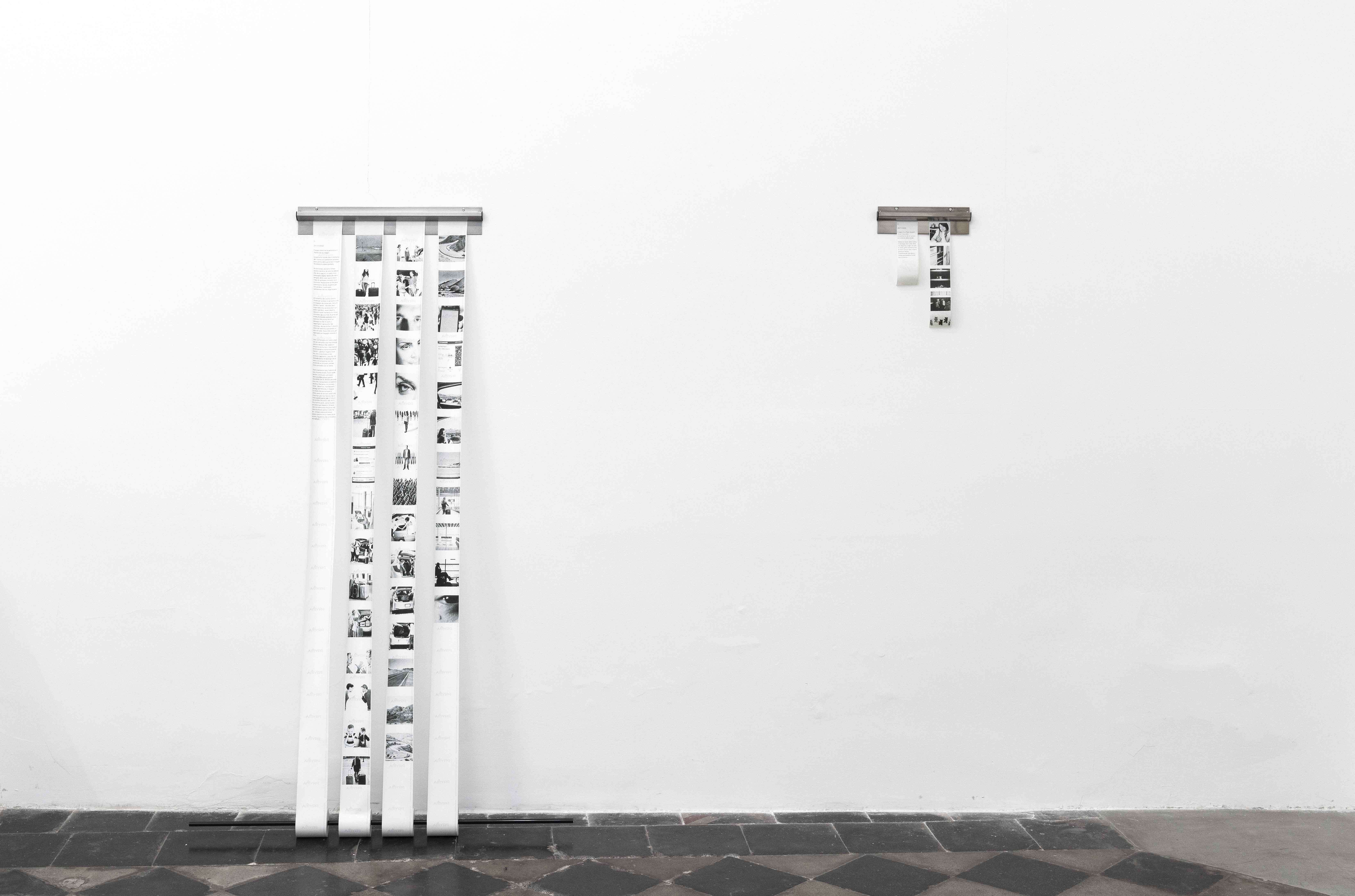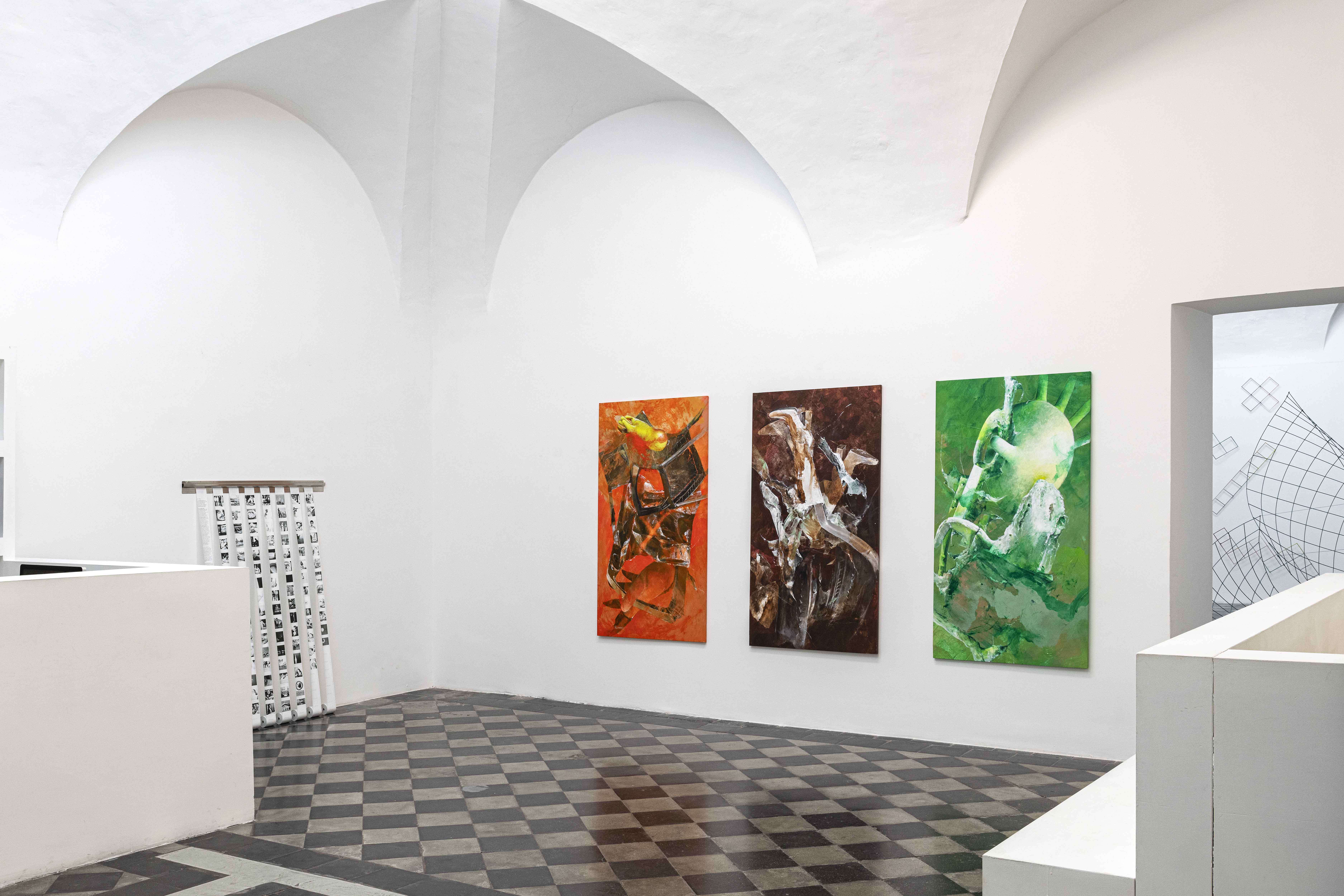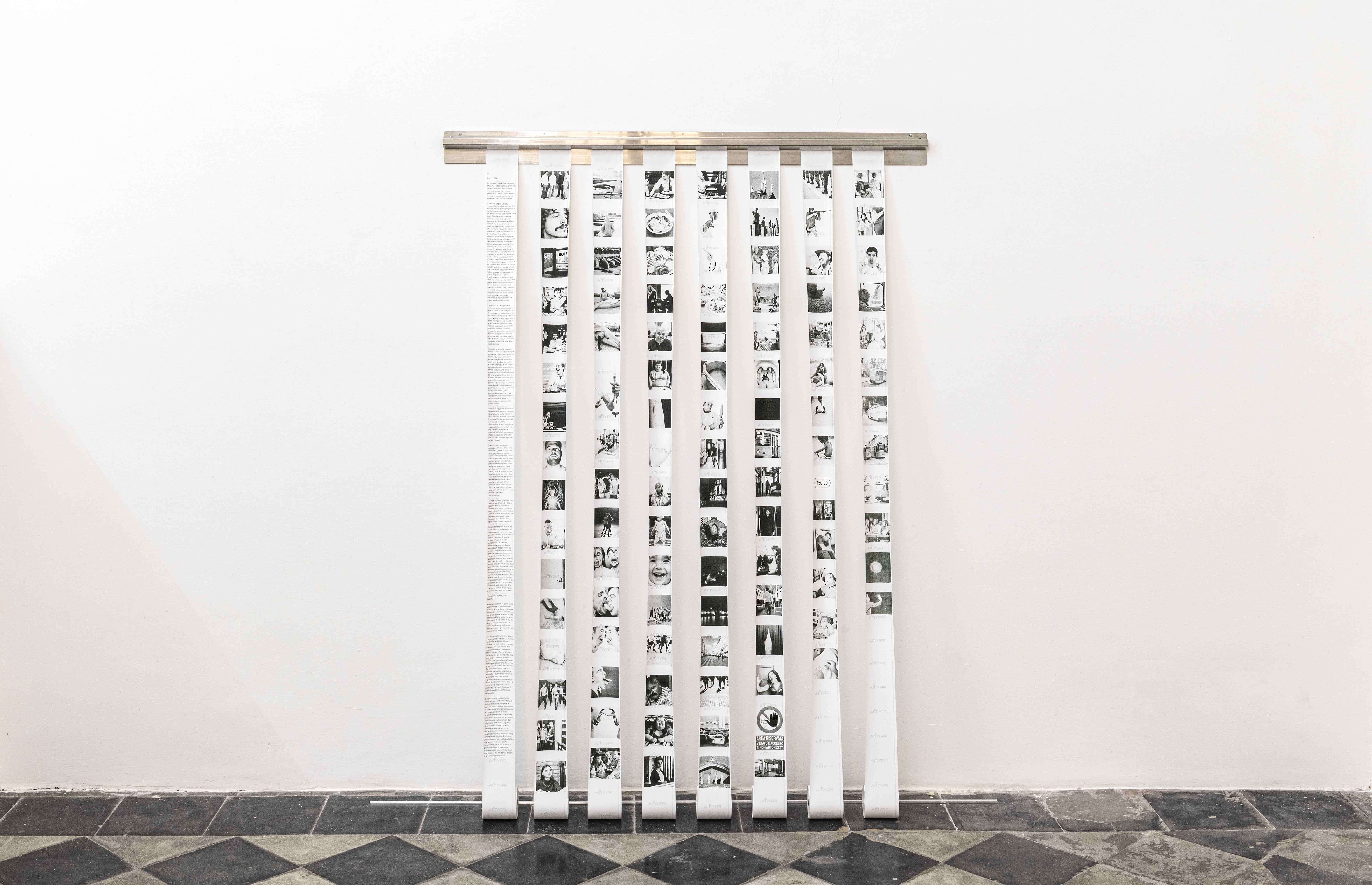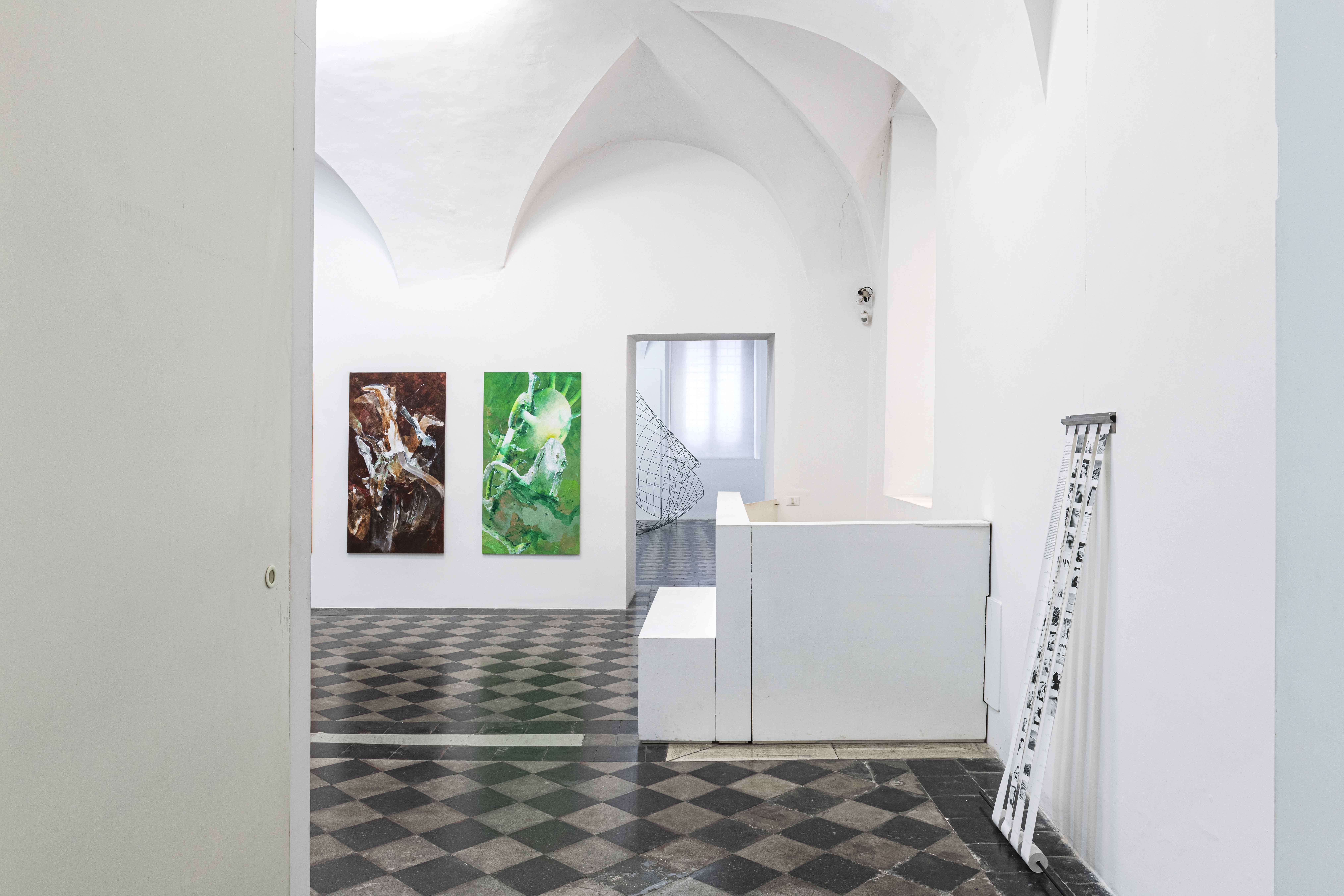19/01/2023 - 18/03/2023
Unosunove gallery, Rome
curated by Angelica Gatto and Simone Zacchini.
With Mirella Bentivoglio, Giulio Bensasson, Cristiano Carotti, Francesca Cornacchini, Andrea Martinucci, Niccolò Moronato, Jonathan Vivacqua.
Ph: Carlo Romano
And if The Fool spoke... “Do you know that at any moment a change of consciousness can occur, do you know that suddenly you can change the perception you have of yourself? Sometimes it is believed that taking action means being successful over someone else. Error! If you want to act in the world, you have to explode the perception of the ego that has been imposed on you, stuck on you since childhood, and that refuses to change. You have to push your limits endlessly, relentlessly. […] Stop being your own witness, stop watching yourself, be a pure actor, an entity in action. Your memory will stop recording the deeds, words and gestures you have made. You will lose track of time. Until now you have lived on the island of reason neglecting the other living forces, the other energies. The landscape widens. Join the ocean of the unconscious. Then you will experience a state of superconsciousness in which there are no failures or accidents. You don’t have a conception of space, you become space. You don’t have a conception of time: you are the phenomenon that comes. In this state of extreme presence, every gesture, every action is perfect.” A. JODOROWSKY.
The Way of Tarot If, at the same time as the exhibition The Expanded Body (January-March 2022), the guiding image chosen for the project was the tarot card of “The World”, for the new exhibition itinerary imagined for 1/9unosunove Gallery the emblem becomes that of “The Fool” (Le Mat or Le Fou), a card whose key words are - among others - freedom, research, liberating force, irrational, chaos. For this reason it’s often associated with creativity and ideally represents an archetypal complement of “The World”, a Tarot that indicates the Whole. Linked to the earth, in a visceral way, the Fool acquires on himself a tension and a constant aspiration towards the Whole, while still being radically bound to an earthly dimension, of a practical order. In The Expanded Body the intent was to reassign to corporeality a new centrality, not necessarily linked to the objective presence of the body and its components. With the exhibition Fou Rire it is once again the body to be considered central this time in its inseparable link with the cerebral and mental matter (also explicitly linked to the contents of memory) which, when it comes into conflict with the body, triggers dissymmetries, conflicting crases that underlie a continuous retraction of what we are compared to what we would like to be. In direct confrontation with desire, action and immobility intersect in an often endless dynamic.
In the constant crisis situation of Western societies, this is also reflected in the conflict between the (often self-imposed) drive to hyper-productivity and the underlying “insuffering” that accompanies it. Taking inspiration from Alejandro Jodorowsky’s reading of the “The Fool”, the exhibition intends to emphasize that the praise of weaknesses should not necessarily be perceived as the justification of paralyzing apathy, but rather as the engine of a liberating action. In this way, “The Fool”, with its wanderings, ends up representing a non-linear productive dimension, in which every attempt is liable to failure. Individual “in-suffering”, mirror of a social dynamic intrinsic to a certain postcapitalist work approach, becomes an aesthetic trigger where even uselessness, irony and fun are not conveyed by an algorithm imposed from the outside. For this reason, the exhibition opens with a historical concrete poem by Mirella Bentivoglio (Klagenfurt, Austria, 1922 - Rome, 2017) which represents, in the form of a cage, the first person of the verb to have. The letter O, red, with its iconic autonomy stands out on the black H (and, therefore, on the structure of the cage) thus representing an alternative, a possibility of escape that, after more than fifty years, becomes increasingly complex. The imaginative pervasiveness of contemporaneity has led to an aesthetic hypersensitization in which the retinal persistence of imposed images (burn in: effect of permanence of images on a screen) becomes the counterpart of the burn out, a syndrome derived from a condition of chronic and persistent stress. After the fire, what remains in the image, eyes, body and mind? And how to make burning take on a constructive character? Dissymetries and dichotomy burn in/burn out become the two conceptual matrices that come into play in the exhibition to try to answer these questions.
On the one hand: the absence of symmetry that opens the door to an aesthetic of ugliness - remodeled by reflections of psychoanalytic and philosophical origin, when not openly linguistic - and to a rethinking of the categories of beauty and good (the kalokagathia of ancient memory). On the other: a conflict between image and exhaustion that leads to a progressive detachment from the context, through states of chronic stress that can degenerate into the loss of attention and, therefore, to the deviation from hyper-performativity.
At the same time as the syndrome in the workplace, burning ends up being able to be understood as an unconscious liberation from a post-capitalist dynamic, marked by the exceptional nature of each individual subjectivity. In such a condition, (self-)irony is fundamental, capable of activating the “laughable” element of contemporaneity. Comic fantasy is properly human and already for Henri Bergson, it was fundamental to understand the processes that the imagination follows in her work. This social and collective imagination derives from real life and is related to art. Because, as Samuel Beckett suggests in one of his short poems from the mirlitonades series, it’s necessary to face the worst jusqu’à ce qu’il fosse rire.
(...)
Camilla Gurgone (Lucca, 1997) presents three sculptural installations, in which rolls of thermal paper descend to the ground, held in tension by an aluminium control bar. Each work shows a sequence of images produced by the artist through artificial intelligence algorithms, in an attempt to recompose all the scenes belonging to a dream realized by her or told to her by others. The use of images fished on the web opens a reflection on the personal and collective imagination. Heat printing refers to the evanescence of the mind whose memories, with the passage of time, slowly tend to fade. The three canvases by Andrea Martinucci (Rome, 1991) reflect on the need for a reconfiguration of pictorial language towards new definitions. They are configured as a union of three voices, a hymn to the life and death of the old world, branching out of the margin to emerge in the mists of our times. The three works, interrupting the eye distance with the surface, expand towards space through their vibrant power: a progressive waltz towards the places of the ephemeral, the unfulfilled and desire.




Process to shape the imaginary, 2023.
Print on thermal paper, order bar, aluminum.




